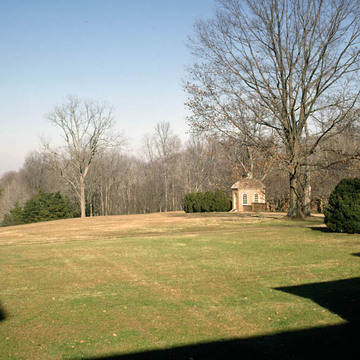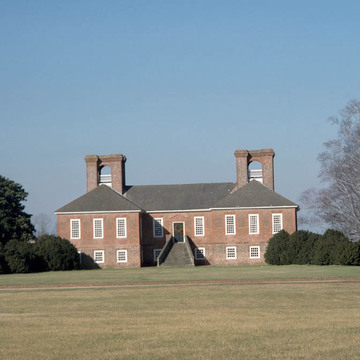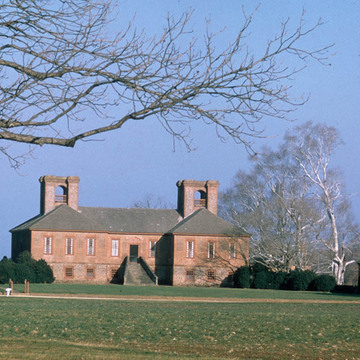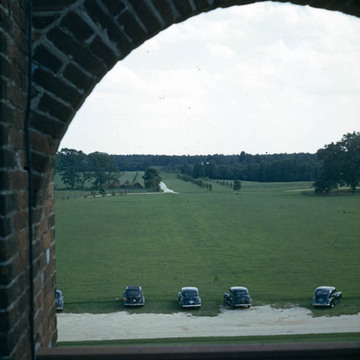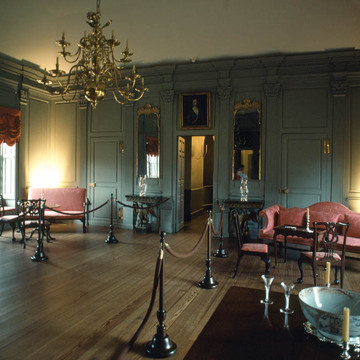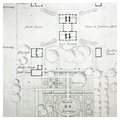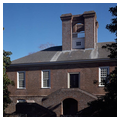One of the best known of Virginia's houses, Stratford is important not only as the birthplace of Richard Henry Lee and Francis Lightfoot Lee, both signers of the Declaration of Independence, and of Robert E. Lee, but also for its architecture. Thomas Lee built the structure and named it after the ancestral home in East London of his grandfather, also Thomas Lee, who had emigrated to Virginia in the mid1600s.
Architecturally, Stratford Hall is ambitious, both sophisticated and naive. It displays the wealth and aspirations of a mid-eighteenth-century Virginian. It also illustrates the problems of trying to build at such a scale in its time and place. Stratford Hall centers on a parterre. Four dependencies, one at each corner, contain an office and a kitchen-laundry on the south forecourt and other service functions in two smaller structures on the north forecourt. The H-plan house is composed of two three-bay hip-roofed end blocks, out of which rise two large clusters of chimney stacks joined with arches and rails. The piano nobile, unusual in Virginia houses, sits on a high basement. The floor levels are distinguished by brick of different colors and sizes laid in Flemish bond. Occupying the center of the house is the square “great hall,” with elaborate bolection paneling, Corinthian pilasters, and an ogee-molded chair rail.
The precise sources for the design of Stratford Hall are unknown, and historians have had a field day identifying plates in Serlio, Gibbs, and Palladio and English precedents in the work of Lord Burlington and Vanbrugh. Whatever the source, Lee and his builders misjudged the proportional relationship of the chimneys, creating a sophisticated and yet provincial composition.
Stratford passed out of the Lee family's possession in 1828. In the 1920s the Robert E. Lee Memorial Association, established on the model of the Mount Vernon Ladies Association, purchased the property and employed Fiske Kimball, the scholar-architect, to direct the restoration. Kimball replaced most of the nineteenth-century window sash with sash based on more “correct” eighteenth-century models, repaneled several of the interior rooms with what he thought was more accurate woodwork, and designed exterior entrance stairs based on English precedent. For the association he also designed the nearby Regent's or Council House, a notable brick Colonial Revival structure.



